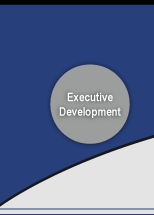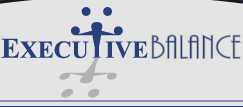|
Professional Issues In Education
The nation’s school system is not producing
leaders at the level required by a global economy (Abbeduto, 2006;
Caboni & Sdisu, 2004; Guthrie & Springer, 2004). While scholars agree on
this fact, the means of addressing the issue vary greatly, from more
control (Resnick as cited in Abbeduto, 2006) to a focus on contextual
redesign based on human understanding (Sheldon as cited in Abbeduto,
2006; Sun, 2005). Effective education can not occur with an expert at
the front of the class, providing knowledge to learners and measuring
outcomes by tests, papers and some ‘smile face’ surveys (Jacques, 1996;
Keene, 2005; Rossi, 1988; Sheldon as cited in Abbeduto, 2006). While the
traditional system of education is similar for all levels of education,
the focus of this paper is primarily at the business level (including
higher education with professionals taking evening/weekend/accelerated
courses). In order for adult education to meet the needs of a global
economy, going beyond the typical changes in behavior or strategies
toward seeking the reinvention of belief systems creates an adoptable
and flexible contextual system that transcends current boundaries of
organizations. A review of teaching and evaluation issues reveals a lack
of focus on the underlying beliefs that govern behaviors (Balvister &
Vickers, 2004).
Theoretical Background
According to Watkins (as cited in Merriam & Cunningham,
1989), “workplace learning accounted for 85 percent of the variation in
lifetime earnings, while formal education accounts for only 15 percent
of this variance” (p. 427). People spend between 12 to 16 years in
formal education, only learning 15% of what they need to be successful.
Something is not working within the educational system (Caboni & Sdisu,
2004). In the business world, taking a training course represents an
attempt to address a problem. For example, the huge attention on ethical
practices has forced many companies to take on ethics training (Sauser,
2004). Yet, these training programs have failed to reduce legal
violations (McKendall, DeMarr & Jones-Rikkers, 2002). Measures of
success are often “smile face” surveys or attendance numbers (Keene,
2005; Rossi, 1988). They fail to provide a feedback loop that creates
permanent changes in behaviors or thinking. The concept of a honeymoon
effect describes the lack of permanent change, as newly acquired
behaviors fades within days or weeks (Goleman, Boyatzis & McKee, 2002).
To attempt to “fix” this issue, a conceptual understanding in the birth
of the current education system provides insight into the root cause.
The seed that gave birth to the college/university educational system
was the industrial revolution (Jacques, 1996; Sun, 2005). Before that
era, education was mostly informal apprenticeships where the apprentice
departed the apprenticeship within a few years to start their own
business. Such a mentality of entrepreneurship did not align with the
needs of the industrial revolution. The industrial revolution required
workers who are controllable by management, not entrepreneurs who had
ideas of their own ideas. The need for skilled and controllable labor in
factories helped drive the formation of higher education systems for
learners. With a heavy influence by Taylor’s scientific principles of
management, the integrated experiential learning in the apprenticeship
model perished. In order to match the needs of industry, the division of
technical knowledge aligned with the division of labor (Jacques, 1996).
Based on the needs of the economy and the lack of a formal education
system, the vocational movement in the early 1900’s created a system
that produced controllable workers who contain segregated knowledge that
lacked interconnectedness of knowledge and multiple intelligences
(Gardner, 1993; Jacques, 1996).
While the vocational movement created an automobile that launched the
United States toward a world power, this automobile will not run on the
information superhighway or reach space. The typical content changes to
the existing system such as standardization fails to consider neither
the various intelligences of the human being (Gardner, 1993) nor the
interconnectedness of knowledge and people (Capra, 1996; Checkland,
1999). Furthermore, blaming teachers/trainers for the issues in the
system places blame is a band aid approach to a systemic problem (Resnick
as cited in Abbeduto, 2006). No amount of fixing or blame will ever
create a new educational vehicle that launches humanity into a global
knowledge-based economy (Drucker, 1993; “Harvard Business Review on
Knowledge Management,” 1998; Sun, 2005).
Currently, an enormous amount of research has shown the validity of new
methods of education, such as constructivism and meaningful learning (Ormrod,
2006; Sun, 2005). Especially for adult learners, the definition of
learning as a permanent change in both behavior and thought needs to be
at the foundation of educational systems, along with andragogical
beliefs (Ormrod, 2006; Smith, 2002). Most of these methods call for a
contextual focus in the system. This would be a complete redesign of
adult education, including the structure of educational institutions and
training organizations. The new educational vehicle would encompass
fundamentals of knowledge creation spirals (Nonaka & Takeuchi, 1995) as
well as variations of constructivism and meaningful learning
methodologies (Abbeduto, 2006; Ormrod, 2006; Sun, 2005). At the
foundations of this new educational vehicle, the principles of andragogy
offer a flexible framework that transcends the content of a fast paced
environment, which is constantly changing (Drucker, 1993). Leaders in
the classroom, including professors and trainers, need to believe that
learners are naturally creative and innovative who possess
self-direction, rather than the traditional pedagogical/industrial
belief that learners are child-like and require direction (Jacques,
1996; Smith, 2002).
Unfortunately, many training programs fail to address the fundamental
beliefs required for contemporary theories and methods. Regardless of
the brilliance of theories and methods, the lack of congruence between
one’s beliefs/values and theories/methods creates the honeymoon effect
in both educators and adult learners (Goleman, Boyatzis & McKee, 2002).
Furthermore, little research exists for individual application of values
and beliefs within the organizational context (Hofstede, Neuijen, Ohayv,
& Sanders, 1990; Priem, 1994; Priem & Rosenstein, 2000). Too many
organizations focus on content driven needs such as immediate
performance, rather than focus on the process of learning or challenging
the basic assumptions in beliefs (Seijts & Latham, 2005). These factors
are a major roadblock to learning.
Another key foundation of the new educational vehicle is a
self-correction mechanism based on the true impact of learning, clearly
not exhibited by the typical ‘smile faces’ in survey (Keene, 2005;
Rossi, 1988). One possibility in creating such a feedback loop may
entail Kirkpatrick’s (1976, 1998) four levels of learning outcomes:
reaction, learning, behavior, and results or Nonaka & Takeuchi’s (1995)
knowledge creation spiral. This would create a sustainable system that
would take on the characteristics of a living system (Capra, 1996;
Checkland, 1999). A system that is self-correcting, self-programming and
self-healing, similar to a human being.
Concerns in Educators
Values and beliefs are the fundamental building blocks
of an individual. They affect all aspects of decision-making and
behaviors (Balvister & Vickers, 2004; Ormrod, 2006). While ignoring the
beliefs and values of learners and teachers, the majority of adult
education focuses on behaviors. Especially in the business training
environment, firms often exploit training as a tool to enforce rules and
policies (McKendall, DeMarr & Jones-Rikkers, 2002; Sun, 2005). While the
focus on content may be worthy, management often dictates the context of
education. One may be required to attend a training session, while most
have little to no time to take action based on new information (Goleman,
Boyatzis & McKee,Swiss Replica Watches 2002). Within such an environment, common business
practices confirms to behaviorist beliefs which assume that learners
require external motivation (Ormrod, 2006). Therefore, the role of
management is to provide that motivation and create a dependent,
child-like workforce that is easily controlled (Jacques, 1996).
In order to create effective learning for adults, learners and teachers
need to redefine their beliefs concerning their roles and the
relationship between learners and teachers. As studies have shown,
learners with a high sense of self and a belief in their abilities are
more likely to succeed in many areas of life such as academic and social
success (Guay, Marsh, & Boivin, 2003; Ormrod, 2006). Rather than an
unbalanced focus on the specific content, educators can focus on the
development of self-esteem with every class or session. Yet, to focus on
such developments, the individual leading the class must embody an
andragogical perspective on learning. In order to do that, these leaders
can reflect on their beliefs about their role as teachers as well as
their own personal fears and ego. Such an examination would reveal many
hidden and potentially ugly reflections. In order to authentically
practice new methods of education such as constructivism that reside on
andragogical foundations, examination and reinvention of one’s
fundamental beliefs can pave the way for sustainable and authentic
changes in educational leaders (Ormrod, 2006). These new reinvented
beliefs form the basic building blocks of the new educational vehicle.
Evaluation Issues
The evaluation of individuals in most companies is performance based.
Although this is not conducive to learning, companies often judge
individual performance without a balanced consideration for the process
or environmental conditions (Seijts & Latham, 2005). Such performance
evaluations drive learners to be fearful of mistakes, as they see
failure as a sign of incompetence. To make the environment more toxic,
organizations sometimes see failures as a predictor of future failures (Argyris,
2002; Ormrod, 2006). These judgments and predictions have resulted in
managers hiding the truth by misrepresenting the performance to gain a
perception of protection, which ultimately destroyed many companies such
as Adelphia, Tyco and WorldCom (Sauser, 2004). Performance evaluation
limits the learner from learning, since there is a duality of success or
failure. Within such a duality, politics often influence learners to
conform to the “right” answers while ignoring the truth (Perry, 2006).
None of the above behaviors promotes learning. The focus on performance
communicates a belief that management does not care about the
development of its people nor is it willing to provide an environment
for learning to occur. Although this may not be an explicit policy in
any organization, common practices articulate such beliefs.
Another evaluation issue rests in many training workshops where ‘smile
sheets’ evaluate the success of a particular course (Keene, 1988; Rossi,
2005). Often, the entertainment value of a training session is valued
over the actual adoption of content. Even within many reputable
leadership development organizations studied within central Ohio, most
still use ‘smile sheets’ and fail to illustrate the actual effectiveness
of their programs. One interpretation of such practices is an underlying
fear of going out of business. If leadership organizations and training
programs truly functioned on a contextual level that developed learners
into capable individuals with high self-esteem who is capable of
self-directed learning, training organizations would not be required for
learning to occur. Thus, a self-serving motive of survival supersedes
the development of independent learners.
Nonaka and Takeuchi (1995) and Kirkpatrick (1976; 1998) presented
profound evaluation of learning systems. While learning may initiate
within the classroom setting, the bulk of the learning happens when
learners apply new knowledge within the context of their environment and
measure its impact. The knowledge creation spiral is a perfect example
of such an evaluation system that creates meaningful learning (Nonaka &
Takeuchi, 1995). The third and forth levels (behavior and impact) of
Kirkpatrick’s (1976; 1998) learning outcomes highlights the need to
measure long term impact. In order to implement such models, educators
must step away from the traditional powerbase of dependence. Educators
need to see their roles as guides and resources, rather than the center
of attention (Abbeduto, 2006; Ormrod, 2006). If evaluation systems are
to be holistic, a focus on learning and process must balance process
measure and performance measures (Seijts & Latham, 2005). This balance
allows competence to develop within a learning spiral over time (Nonaka
& Takeuchi, 1995; Ormrod, 2006).
The fundamental beliefs drive many choices from teaching methods to
evaluation methods. As educators examine their beliefs concerning their
role as teachers, an updated belief could encompass a partnering model,
rather than a rigid hierarchical structure. The enhanced beliefs
concerning the relationship between learners and teachers would add the
enthusiasm to learning. The reflection process for educators to
challenge their assumptions and beliefs can yield the critical thought
required for building the new educational vehicle (Ormrod, 2006).
Conclusions
Time has some to let go of the content-based system that
has served the industrial era well. It is futile to attempt to fix the
educational automobile, since its tires will never run on the
information superhighway. The knowledge-based economy requires adults
with a new way of thinking and a different set of beliefs (Drucker,
1993; Goleman, Boyatzis & McKee, 2002; “Harvard Business Review on
Knowledge Management,” 1998). A self-analysis of leaders’ beliefs and
values in education is the first step toward building a new educational
vehicle. This practice calls for significant research. Furthermore, it
will pave the road for contemporary methods such as constructivism to
flourish.
By
Dr. Ted Sun
January, 2007 rolex replica watches
For additional publications and articles, click here...
References
Abbeduto, L. (2006). Taking sides: Clashing views in educational
psychology (4 th ed.). Dubuque , IA : McGraw-Hill.
Argyris, C. (2002). Teaching Smart People How to Learn. Reflections: The
SOL Journal, 4(2), 4-16. Retrieved January 14, 2004, from EBSCO Research
Database.
Balvister, S. & Vickers, A. (2004). Teaching yourself NLP. Chicago:
Contemporary Books.
Caboni, T. C. & Adisu, M. (2004). A nation at risk after 20 years:
Continuing implications for higher education. Peabody Journal of
Education, 79(1), 164-176.
Capra, F. (1996). The web of life. New York: Doubleday.
Checkland, P. (1999). Systems thinking, systems practice: A 30 year
retrospective. New York: John Wiley & Sons, Inc.
Drucker, P. F. (1993). Post-capitalist society. Oxford: Butterworth
Heonemann.
Gardner, H. (1993). Multiple intelligences: the theory in practice. New
York: Baisc Books.
Goleman, D. Boyatzis, R. & McKee, A. (2002). Primal leadership :
realizing the power of emotional intelligence. Boston, Mass.: Harvard
Business School Press.
Guay, F., Boivin, M., & Hodges, E.V. E. (1999). Social comparison
processes and academic achievement: The dependence of the development of
self-evaluations on friends’ performance. Journal of Educational
Psychology, 91, 564-568.
Guthrie, J. W. & Springer, M. G. (2004). A nation at risk revisited: did
wrong reasoning result in right results? At what cost? Peabody Journal
of Education, 79(1), 7-35.
Harvard business review on knowledge management. (1998). Boston, MA:
Harvard Business School Press.
Hofstede, G., Neuijen, B., Ohayv, D. D. & Sanders, G. (1990). Measuring
organizational cultures: A qualitative and quantitative study across
twenty cases. Administrative Science Quarterly, 35, 286-316.
Jacques, R. (1996). Manufacturing the employee: Management knowledge
from the 19th to 21st centuries. Thousand Oaks, CA: Sage Publications.
Keene, M. R. (1988, June). Training is great, but does it work? ABA
Banking Journal, 67-78.
Kirkpatrick, D. L. (1976). “Evaluation of training”, in Craig, R. L.,
Training and Development Handbook, 2(18), 1-27.
Kirkpatrick, D. L. (1998), Evaluating training programs: The four
levels, San Francisco, CA: Berrett-Koehler.
McKendall, M., DeMarr, B., & Jones-Rikkers, C. (2002, June). Ethical
compliance programs and corporate illegality: Testing the assumptions of
the corporate sentencing guidelines. Journal of Business Ethics, 37(4),
367-383.
Merriam, S. B. & Cunningham, P. M. (1989). Handbook of adult and
continuing education. San Francisco: Jossey-Bass.
Nonaka, I., & Takeuchi, H. (1995). The knowledge-creating company: How
Japanese companies create the dynamics of innovation. New York: Oxford
University Press.
Ormrod, J (2006). Educational Psychology: Developing Learners. (5). New
Jersey: Pearson.
Perry, W. (2006, March). Scheme of Intellectual and Ethical Development.
Retreived on August 21, 2006 from http://www.cs.buffalo.edu/~rapaport/perry.positions.html
Priem, R. L. & Rosenstein, J. (2000, September/October). Is organization
theory obvious to practitioners? A test of one established theory.
Organization Science, 11(5), 509-527.
Priem, R. L. (1994, August). Executive judgment, organizational
congruence, and firm performance. Organization Science, 5(3), 421-437.
Rossi, J. (2005, May). Putting performance into practice. T+D, 59(5),
18-18.
Sauser Jr., W. I. (2004, April). Teaching business ethics to
professional engineers. Science & Engineering Ethics, 10(2), 337-342.
Seijts, G. H. & Latham, G. P. (2005). Learning versus performance goals:
When should each be used? Academy of Management, 19(1), 124-131.
Smith, M. K. (2002). Malcolm Knowles, informal adult education,
self-direction and anadragogy, The Encyclopedia of Informal Education,
retrieved on August 21, 2006 from www.infed.org/thinkers/et-knowl.htm
Sun, T. (2005). Meaningful learning: An effective methodology that
yields tremendous leaders today. Conference Proceedings on Global
Conference on Business and Economics. Oxford, England.
|
|
 |
Research to Knowledge.
...helping you achieve greatness through balance.
|






